#Samuel American horse
Text
IWTV Season 2 Sources & References
(The 1st 4 were cited by the Writer’s Room)
The Ethnic Avante-Garde: Minority Cultures and World Revolution by Steven S. Lee
Paris Journal 1944-1955 by Janet Flanner (Genet)
The Vampire: A Casebook by Alan Dundes
Anne Rice’s Vampire Chronicles: An Alphabettery
The Fly cited by Jacob Anderson
King Lear by Shakespeare cited by Rolin Jones
Melmoth the Wanderer by Charles Maturin
Sebastien Melmoth by Oscar Wilde
Amadeus (1984)
The Lost Boys (1987)
Gaslight (1944)
Batman
Casablanca (1942)
Now, Voyager (1942)
The Third Man (1949) cited by Levan Akin
An American in Paris by George Gershwin (1928) cited by Daniel Hart
Moulin Rouge (2001)
The Phantom of the Opera
Les Vampires (1915)
Dracula (1931) credit to @vampchronicles_ on twt
Le Triomphe de L’amour by Pierre de Marivaux
Giovanni’s Room by James Baldwin cited by Jacob Anderson
Existentialism is a Humanism by Jean Paul Sartre
Les Liaisons Dangereuses by Pierre Choderlos de Laclos
Romeo and Juliet by William Shakespeare
How to Win Friends and Influence People by Dale Carnegie
Hamlet by William Shakespeare
Vampire’s Kiss (1988) credit to @talesfromthecrypts
Les Morts ont tous le Meme Peau by Boris Vian credit to @greedandenby
The Most Dangerous Game by Richard Connell
Waiting for Godot by Samuel Barclay Beckett credit to @rorscachisgay on twt
An Enemy of the People by Ibsen
Anna Karenina by Leo Tolstoy
Vie de Voltaire by Marquis Condorcet
Simone de Beauvoir: A Critical Introduction by Edward Fullbrook and Kate Fullbrook credit to @iwtvfanevents
Nightwood by Djuna Barnes credit to @iwtvfanevents
Beloved by Toni Morrison
Artists and Salons Referenced:
R-26
Palma Vecchio
Andre Fougeron
Elsa Triollet
Fred Stein
Lisette Model
Gordon Parks
Miguel Barcelo
Taxidermied Javelina by Chris Roberts-Antieau
Ai WeiWei (wallpaper)
David Hockney (Lemons)
Wols
The Kiss of Judas by Jakob Smits
Salome by Louis Icart
Ophelia by John Everett Millais
Shelter by Peter Macon
The Kiss by Edvard Munch
The Vampire or Love and Pain by Edvard Munch credit @iwtvasart
Ruiter on Horse by Reiger Stolk credit @ iwtvasart
Portrait of Frank Burty Haviland by Modigliani credit @iwtvasart
Self-Seers II (Death and Man) by Egon Schiele credit to @90sgreggaraki
The Sleep of Reason Produces Monsters by Goya
Movie & Play Posters on set (in chronological order by year):
Tarzan and his Mate (1934)
Avec le Sourire (1936)
Les Deux Gosses (1936)
Le Jour Se Leve (1939) about a man who commits murder as a result of a love triangle and locks himself in his apartment recounting the details as the police attempt to arrest him. Credit to @laisofhyccara
Nuit de Décembre (1940)
Mademoiselle Swing (1942) about a girl who follows a troupe of swing musicians to Paris.
Les Enfents du Paradis (1945) about a woman with many suitors including an actor and an aristocrat.
Fantomas (1946) about a sadistic criminal mastermind. This version includes a hideout in the catacombs where he traps people.
Quai des Orfevres (1947) watch here
Monsieur Vincent (1947)
Le Cafe du Cadran (1947) about a wife’s affair with a violinist.
La Kermesse Rouge (1947) film about a jealous artist who locks up his younger wife and a fire breaks out while she’s trapped.
Morts Sans Sepulture by Jean-Paul Sartre (play) also published in English translations as “The Victors” or “Men Without Shadows” about resistance fighters captured by Vichy soldiers struggling not to give up information.
Mon Faust by Paul Valery (play)
Musical Influences:: @greedandenby collected all music used in Season 2 here.
Henry Cowell
Meredith Monk
Howling’ Wolf
Shirley Temple
Jason Lindner Big Band
The Teeth
Carlos Salzedo
Alice Coltrane
Thelonius Monk
David Lang
Caroline Shaw
Gadfly by Shostakovich (for Raglan James)
musical career of Martha Argerich
Season 1 here (these lists are updated regularly)
Season 3 here
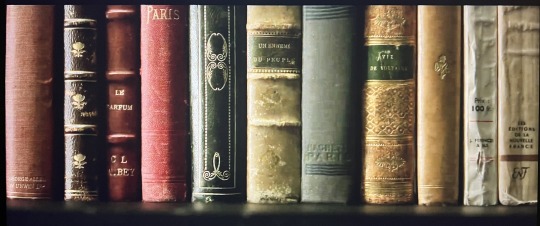
#iwtv#season 2#given that the posters are starting to come out of Prague I decided to start compiling sources and references in one place#Set design#production design#iwtv art
257 notes
·
View notes
Note
what good disturbing books have u read thus far?
im gonna list everything ive read. 🌟 means they're very good, ✅ means they're pretty good, & ❌ means i did not like them
trapped! the story of floyd collins by robert k murray & roger w Bruckner ✅
all the pretty horses by cormac mccarthy 🌟
the revenant by michael punke ✅
blood meridian by cormac mccarthy ✅
hogg by samuel r delany (unsure how to rate this one)
saving noah by lucinda berry ❌
piercing by ryu murakami 🌟
tell me im worthless by alison rumfitt ❌
the summer i died by ryan c thomas ❌
to be devoured by sara tantlinger ❌
bear by marian engel ✅
tender is the flesh by agustina bazterrica 🌟
and then i woke up by malcolm devlin ❌
you should have left by daniel kehlmann 🌟
the haar by david sodergren 🌟
maggies grave by david sodergren ✅
the vegetarian by han kang ✅
split by cathy linh che 🌟
& i am currently reading kill anything that moves: the real american war in vietnam by nick turse & boy parts by eliza clark
#melt-in-places#sorry for any typos i just woke up 👍#you can some fuller reviews on my goodreads (/sweatermuppet or author name silas denver melvin)
283 notes
·
View notes
Text
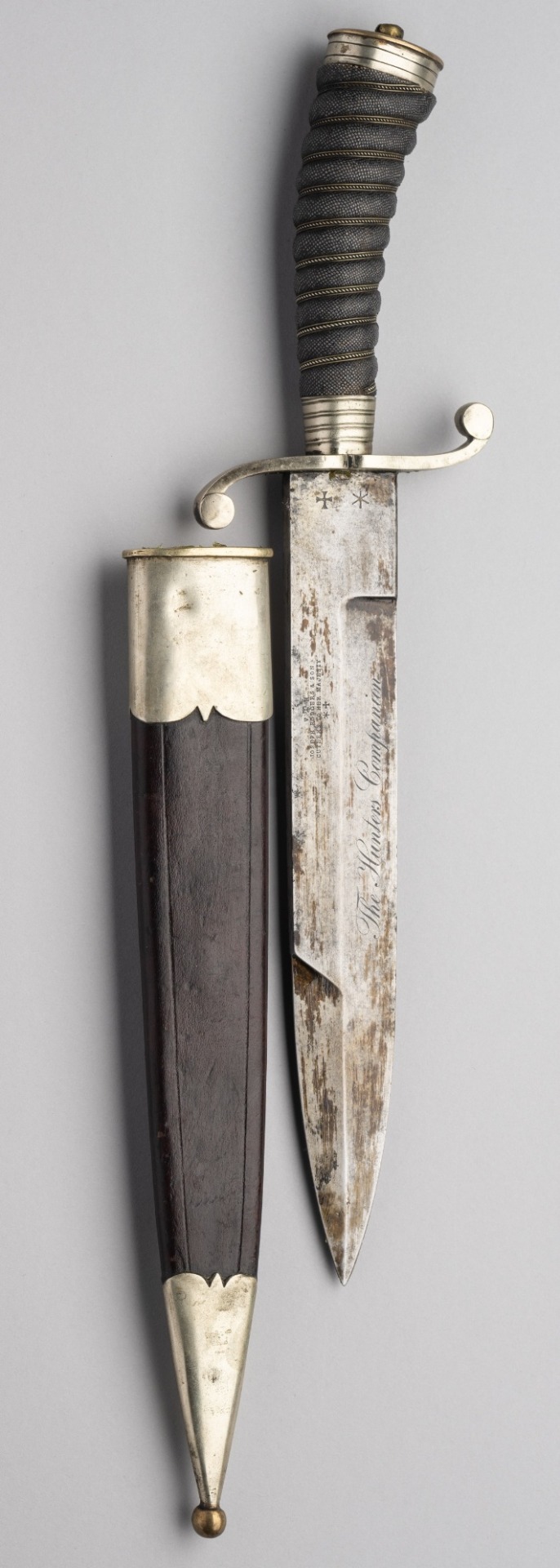
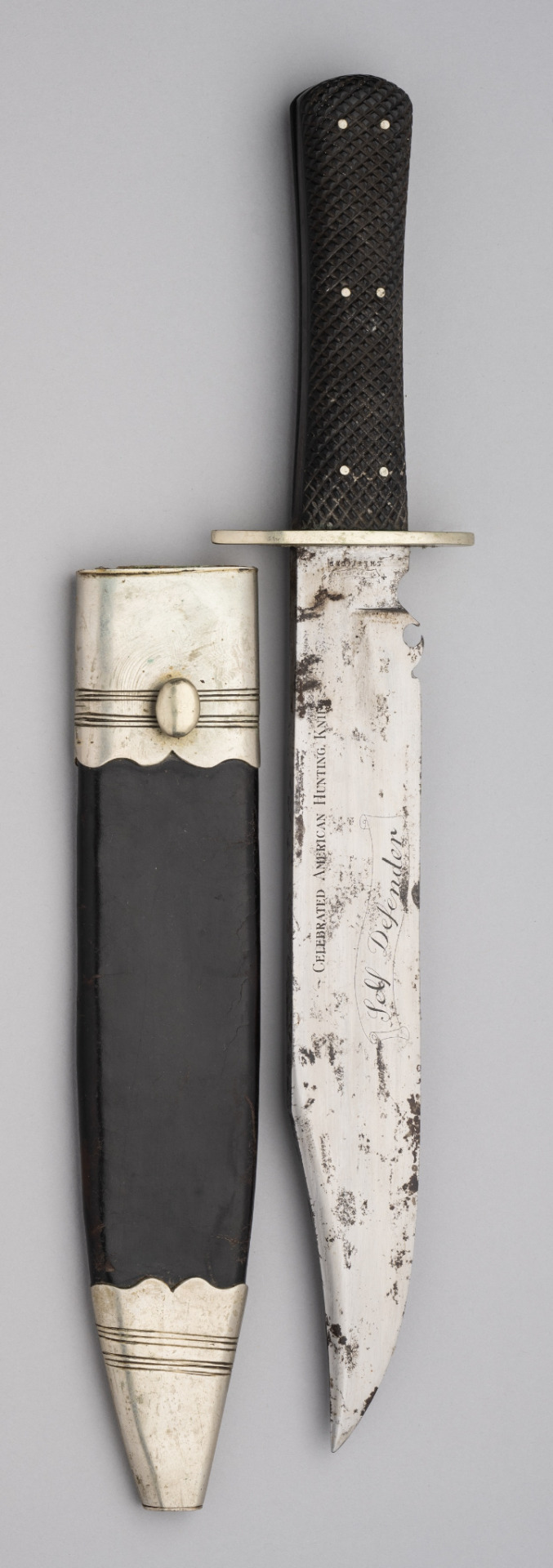




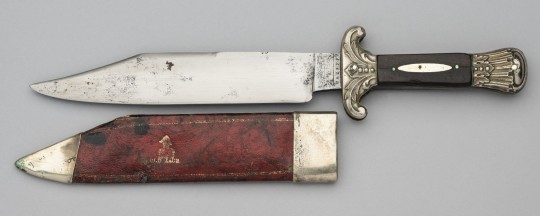



19th century Sheffield bowie knives
A HUNTING KNIFE, JOSEPH RODGERS & SONS CUTLERS TO HER MAJESTY, SHEFFIELD, CIRCA 1860 with tapering blade formed with a spear point, stamped with the maker’s details on one face, and ‘The Hunter’s Companion’ in script, rectangular ricasso struck with star and cross mark, German silver hilt comprising recurved quillons with flattened scrolling terminals, cap pommel (fitted with later copper alloy oval), and spirally-bound fishskin-covered grip, in its leather scabbard with German silver chape and locket, the latter with a belt hook, 23.5 cm blade
A HUNTING KNIFE FOR THE AMERICAN MARKET, MAPPIN & WEBB, SHEFFIELD, CIRCA 1880 with robust blade formed with a clipped-back point with false swage, notched at the forte, stamped ‘Celebrated American Hunting Knife’ in capital letters, ‘Self Defender’ in script on a scroll, rectangular ricasso stamped with the maker’s name and ‘Trustworthy’ on one face of the ricasso and ‘US’ on the other, German silver oval cross-piece and chequered horn scales retained by six rivets, in its German silver mounted leather scabbard with locket and chape each engraved with groups of three lines, and the former with a stud for suspension, 25.3 cm blade
A BOWIE KNIFE, LATE 19TH CENTURY with single-edged blade formed with a pronounced clipped-back point, etched with a Federal eagle and inscriptions on one face including ‘America The Land of Freedom’ and 'The Patriot’s Self Defender’, recessed ricasso stamped ‘Best Quality Rough & Ready’ German silver guard, ferrule and pommel, the latter chased with flowers, and rosewood grip, in its tooled leather scabbard, 19.8 cm blade
A SMALL BOWIE KNIFE, JONATHAN CROOKES, SHEFFIELD, LATE 19TH CENTURY with broad blade formed with a clipped-back point, recessed rectangular ricasso struck with the maker’s name and heart and pistol mark, German silver hilt comprising recurved guard, ferrule and pommel each decorated with scrolling foliage in low relief, and mother-of-pearl grip, in its German silver mounted leather scabbard with belt loop,14.5 cm blade
A BOWIE KNIFE, JONATHAN CROOKES, CIRCA 1880 with straight blade formed with a clipped-back point, slightly recessed rectangular ricasso signed by the maker and with heart and pistol mark, and natural staghorn grips (perhaps an early replacement), 15.3 cm blade
A BOWIE KNIFE, JOSEPH RODGERS & SONS, CUTLERS TO THEIR MAJESTIES, NO. 6 NORFOLK STREET, SHEFFIELD, LAST QUARTER OF THE 19TH CENTURY with broad blade formed with a clipped-back point, struck with the maker’s details and star and cross mark on one face (small areas of light pitting), oval German silver guard, and natural staghorn scales retained by five rivets, in its leather scabbard with large German silver locket and chape, 20.8 cm blade
A DAGGER, MARKED MAZEPPA, PROBABLY SAMUEL HANCOCK & SONS, LATE 19TH CENTURY with broad blade formed with a clipped-back point, recessed ricasso struck with a figure strapped to a horse’s back and ‘Mazeppa’ on one face, German silver hilt cast in low relief, comprising guard and pommel decorated with scrolls, milled copper alloy fillers and hardwood scales, in its tooled and gilt leather scabbard,17.2 cm blade
A BOWIE KNIFE, LINGARD, PEACROFT, SHEFFIELD, PROBABLY 1870 with single-edged blade formed with a clipped-back point and part swaged back-edge, rectangular ricasso stamped ‘Lingards Celebrated Bowie Knife Pea Croft, Sheffield’, German silver hilt comprising two-piece guard and pommel each cast with scrolls and foliage in low relief, brass fillets, staghorn scales, and vacant German silver escutcheon, 21.0 cm blade
AN ARKANSAS BOWIE KNIFE, MORTON & SON, SHEFFIELD, CIRCA 1850-60 with tapering blade of flattened-diamond section, recessed rectangular ricasso struck with the maker’s details (worn, partly illegible), German silver hilt comprising ‘split’ cross-guard and two-piece pommel each decorated with scrolls and foliage in low relief, and a pair of small bone scales retained by two rivets, 22.7 cm blade
A BOWIE KNIFE, WRAGG & SONS, SOLLY ST, MID-19TH CENTURY with broad double-edged blade, recessed ricasso signed in small stamped letters, German silver cross-piece and pommel, the latter cast with an alligator-horse on each face, and horn scales (restorations), in its tooled and gilt leather scabbard with German silver mounts, 30.8 cm blade
tinyurl.com/yr4hd4pr
143 notes
·
View notes
Text
✦Call of Duty Bio Headcanons✦
(I know they have canon ages and heights and stuff, but listen. It's fiction, and I think I know better(/j). You can disagree, but these are my opinions. Also, obviously, not all of the info has changed.)
✧John Price✧
Age: 42 y.o
Height: 6'2"
Pronouns: He/Him
Sexuality: "Sexy-Is-Sexy" (Or Pansexual)
Middle Name: Samuel
Likes: Whiskey, vintage radios, old westerns, horses, & mint ice cream.
Dislikes: Streaming services, cigarettes(ironic), spicy food, dust, & cottage cheese.
Birthday: January 1st
Zodiac: Capricorn
-Trivia-
-Allergic to cats and didn't know until he moved out because his mother had like, four. Grew up around them his entire childhood and was honestly devastated when he realized they make him sick cause he loves'em.
-He was definitely a fuck boy in high school/college. Not an asshole one, he made his intentions up front and he was overall sweet, but he didn't wanna be tied down. Ironic given how he ended up wanting the exact opposite later on.
-Wishes he took better care of his teeth as a kid. They look great now but he has five fillings in his molars and one (now replaced), silver tooth all the way in the back.
Phobia: Amenisphobia; The fear of amnesia
Neuro...: Neurotypical
✧Kyle "Gaz" Garrick✧
Age: 26 y.o
Height: 6'0"
Pronouns: He/Him (I heavily support the trans!Gaz HC)
Sexuality: Bisexual w/ a male preference
Middle Name: Dylin
Likes: Hot chocolate, the smell of lavender, coconut, licorice toffee, & nostalgic music.
Dislikes: Milk, politics(irony again), Winter, grocery shopping, & spiders.
Birthday: September 5th
Zodiac: Virgo
-Trivia-
-Second oldest of four children, the only boy. He's a family man when it comes to his siblings, but not so much when it comes to his parents. Barely present father and a stressed out mother create for a shaky relationship with them.
-Cannot cook to save his life. Man lives off of delivery, MREs, and cup noodles. He knows like...four dishes, and most of them are really simple.
-Struggles decorating and making outfits cause he likes tons of different aesthetics. Everything from Scene Kid(for his inner teen) to streetwear. His version of housed decor are a bunch of plants. (Fake so they don't die when he's on deployment)
Phobia: Arachnophobia; fear of arachnids/spiders.
Neuro...: Neurodivergent (Dyslexia)
✧Johnny "Soap" MacTavish✧
Age: 29 y.o
Height: 5'8"
Pronouns: He/Him
Sexuality: Omnisexual
Middle Name: Neil (heh)
Likes: Knickknacks, loud music, punk aesthetic, chickens, & football(aka Soccer for us pathetic Americans).
Dislikes: Silence, sitting still, vague answers, being told what to do, & big dogs.
Birthday: August 12th
Zodiac: Leo
-Trivia-
-Constantly on & off with a caffeine addiction. He'll do really good about just drinking water, then he'll have one energy drink and he's fucked it all up again.
-The scar on his chin is from a dog, the scar in his eyebrow is from a fight he got in as a teenager. He got in a lot of trouble as a teen.
-Borderline pyromaniac, honestly. Hyperfixated on fire as a kid and now he's really happy to be a bombtech. Bro loves blowing shit up.
Phobia: Cynophobia; fear of dogs.
Neuro...: Neurodivergent (ADHD, hyperlexia)
✧Simon "Ghost" Riley✧
Age: 36 y.o
Height: 6'4"
Pronouns: He/It (Using "it" makes him seem more ominous, which he thinks is fun)
Sexuality: Gay or Homoflexible, demisexual/demiromantic probably
Middle Name: Achilles
Likes: Birds, alternative indie music, dark chocolate, Victorian architecture, & murder mystery books.
Dislikes: Snakes, graveyards, the dark(when it's completely pitch black), 99% of physical touch, & fluorescent lights.
Birthday: December 30th
Zodiac: Capricorn
-Trivia-
-He'll never admit it but he loves babies. They're super tiny and super cute, and Simon's heart always melts when one's around. Alas, he's also terrified of scaring them or getting attached, so he avoids babies as best he can. Can't have people thinking he's soft.
-Makes the best steak in Manchester. Sometimes his seasoning is bland but the meat itself is perfection, you won't find any better. Melts in your mouth every time. It's a steak equivalent of 6 orgasms. It IS an orgasm. He makes great fucking steak.
-Isn't fond of pure silence like Soap, but he doesn't often wanna fill it with loud sounds. He has a playlist of softer, more instrumental songs for this. Or he'll listen to nature sounds. He likes quiet, just not silent.
Phobia: Taphephobia; the fear of being buried alive.
Neuro...: Neurodivergent (Autistic, dyscalculia)
✧Alejandro Vargas✧
Age: 38 y.o
Height: 5'11"
Pronouns: He/Him
Sexuality: Bisexual (Maybe Poly? He's not sure)
Middle Name: N/A
Likes: Hot drinks, the smell of roses, his nieces/nephews, physical affection, & cowboy hats.
Dislikes: Sweaty palms, tourist-y Americans, caramel sauce, white-lies, & the feeling of glue.
Birthday: March 25th
Zodiac: Aries
-Trivia-
-Was with Valeria for awhile, but differences, stress, and Valeria discovering she was pretty gay broke them up. They had some tension, but he wasn't bitter towards her. Until she betrayed them, of course.
-Was actually the last of his friend group to lose his virginity. He's a passionate, flirty man, but he's not throwing that kind of trust out willy-nilly. He had a few relationships but didn't reach that point until he was like, 19, about to turn 20. He asked a friend to share the moment with him. ...a close friend.
-Cannot function in the cold at all. And his definition of cold is 21 degrees Celsius. (70 Fahrenheit for us Americans) He layers and complains all day, he's got a fuckin' heated blanket. A heated blanket owner in fucking MEXICO.
Phobia: Coulrophobia; the fear of clowns
Neuro...: Neurotypical
✧Rodolfo "Rudy" Parra✧
Age: 38 y.o
Height: 5'9"
Pronouns: He/Him
Sexuality: Bisexual (Also maybe poly but he's very hesitant about it)
Middle Name: N/A
Likes: Ice baths, windchimes, baked sweets(mostly pie), clean handwriting, & naps on the couch.
Dislikes: Cutting onions, heavy blankets, confrontation(with like, loved ones. Not on duty, obviously), slow walkers, & reptiles.
Birthday: June 20th
Zodiac: Gemini
-Trivia-
-Super good at singing, but he never does, because he's embarrassed. His mother would often encourage him to sing when he was younger at family gatherings, and now he cringes when someone hears him sing and comments on it.
-His house is full of fans. Some rooms have more than one. They're running basically all the time, as well as the AC. Sometimes he has to get a family member to go home and turn them off when he's on a long mission.
-He knew Alejandro before Alejandro knew him. When they were kids, Rudy was shy and had some problems with his health(exercise induced asthma mostly), so he didn't go out of his way to befriend other kids much. But he was a people watcher, and Alejandro was the most fun to watch. They actually met because one of Alejandro's friends pointed it out and called him creepy, only for Alejandro to defend him. Then they became super close friends!
Phobia: Bufonophobia; the fear of toads
Neuro...: Neurodivergent (Autistic, echolalia)
✧Valeria Garza✧
Age: 39 y.o
Height: 5'7"
Pronouns: She/It
Sexuality: Sapphic Demiromantic
Middle Name: N/A
Likes: Expensive paintings, perfect nail-polish, sandalwood incense, lemon water, & flowers.
Dislikes: Shaving, back-talk, tiny text on documents or books, chunky rings, & pineapple.
Birthday: January 23rd
Zodiac: Aquarius
-Trivia-
-Has a pull to religious imagery in a darker light because of religious trauma. Roman Catholicism is quite common in Mexico, but her parents were really heavy about it. To the point it makes Valeria bitter over it. She has a rocky relationship with God, but finds Mary comforting. Because when she was brought to church, but wanted to hide, she'd hide beside a Mary statue in a corner.
-She has an odd sleep schedule. She often only gets four hours of sleep, but she doesn't seem to be tired at any point. In fact, the more sleep she gets, the more lethargic she is that day.
-Her first girlfriend was when she was still in the military. A traveling medic from Italy. Unfortunately, the flame came and went thanks to the medic having to leave. Valeria has moved on, but she does mourn their lost time sometimes and has a little dream of meeting her again one day. Though she knows that's not practical.
Phobia: Ecclesiophobia; the fear of church
Neuro...: Neurotypical
✧Alex Keller✧
Age: 36 y.o
Height: 6'1"
Pronouns: He/Him
Sexuality: Heteroflexible
Middle Name: Sebastian (he's embarrassed about this)
Likes: Golden retrievers, bad jokes, most seafood, provolone cheese, & hummus.
Dislikes: Thanksgiving, the sound of rubbing styrofoam, being told to "do what he wants"(makes him feel aimless), tobacco smell, & overzealousness. (He likes simplicity...excluding his tattoos)
Birthday: December 2nd
Zodiac: Sagittarius
-Trivia-
-He doesn't really talk to his family excluding holidays. BUT, he will always keep in contact with his older sister, and his niece by proxy. They're the only two that made him feel wanted in his family. He wasn't abused in his mind, but he wasn't paid attention to much either. He always seemed overshadowed by something/someone, and as he got older, he got tired of feeling like an outcast in his own family. So he slowly drifted away and he goes on the guidance of orders he receives.
-Probably born in a small town in a place like Utah. He's got small-town-mid-south manners. But I like to imagine he spent a lot of his time in California too, he seems like he'd enjoy the sun and the ocean.
-Picks up languages really quick, somehow. At least, when he's around people that speak it. If he had to learn purely from books, he'd have choppy speech at best. He's fluent in English, Spanish, and Arabic. Also, knows a bit of ASL, but he's still working on that one.
Phobia: Lilapsophobia; the fear of hurricanes/tornadoes
Neuro...: Neurodivergent (Hyperlexia, SPD)
✧Farah Ahmed Karim✧
Age: 30 y.o
Height: 5'5"
Pronouns: She/Her
Sexuality: Aliquaromantic Demi-Bisexual
Middle Name: N/A
Likes: Poppies, motorcycles, pretty much any food with chickpeas, super spicy stuff, and the sky at dusk.
Dislikes: Overly salty things, riddles, genuine cockiness, the feeling of rust(that includes on spoons...), & long winded responses.
Birthday: July 1st
Zodiac: Cancer
-Trivia-
-Keeps her hair long despite the fact it's annoying to deal with sometimes. Purely for sentimental reasons. To her, it represents the growth she's had as a person. A far cry from the buzz-cut she was forced into when under someone else's control. So she refuses to cut it.
-She will never use it, and she despises it, but she's semi-fluent in Russian. Being around it for so long made her pick it up. It works well if she needs to translate, but she'll be caught dead before she speaks Russian.
-Honestly can't cook for shit. She doesn't know what the hell she's doing in the kitchen and basically relies on MREs or the skills of others. She's not a picky eater though, and she'll always finish what's put in front of her, even if she's not fond of it.
Phobia: Agniophobia; fear of choking
Neuro...: Neurotypical
✧Konig✧
Age: 28 y.o
Height: 6'10"
Pronouns: He/They
Sexuality: Bisexual
Middle Name: Obercht
(Bonus)Last Name: Badubrecht
Likes: Making bracelets, boxing(watching or doing), soda, heavy metal, & fresh bread.
Dislikes: Certain kinds of wool, small cars, low doorframes, having to go to the medic, & the smell of hay.
Birthday: March 9th
Zodiac: Pisces
-Trivia-
-Was bullied all through high school for various things. His demeanor, his size, his hair(which was long), his cleft lip scar, etc. It took until he hit the largest growth spurt he ever had in secondary school when people began to stop poking fun, but instead avoid him. He maybe had 2-3 actual friends in his entire life before the military. And even now he mostly has acquaintances, not friends.
-Doesn't talk to his mother, she was overbearing and cruel, mostly because Konig looks a lot like his father. He doesn't really talk to his father much because the man is hard to talk to. He's not completely cut off, but they are estranged. Konig's grandma hears from him almost every day, sometimes twice a day. She's a badass in her 90s who has never done him wrong, and he would blow up the entire world if anything happened to her.
-Sometimes Konig gets comments that say he's got multiple personalities. (By uneducated people, clearly) Because he seems to switch dramatically between modes depending on time, place, and circumstance. Sometimes he's childish and giggly, cute even. Sometimes he's silent, unreadable, and withdrawn. And on the battlefield he's...inhuman, terrifying, and nothing short of bloodthirsty.
Phobia: Equinophobia; the fear of horses.
Neuro...: Neurodivergent (autistic)
#call of duty#call of duty mwii#modern warfare#captain john price#john price#john soap mactavish#soap mactavish#simon ghost riley#konig call of duty#farah karim#alex keller#alejandro vargas#rodolfo rudy parra#valeria el sin nombre garza#kyle gaz garrick#gaz mw2#soap x gaz#headcanons#call of duty headcanons
274 notes
·
View notes
Text
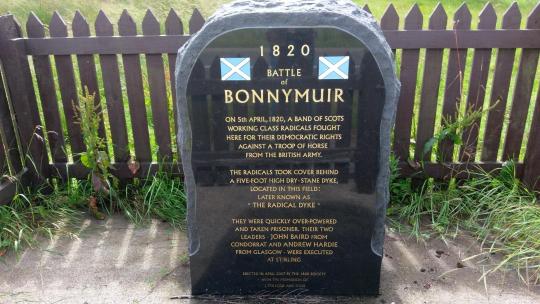
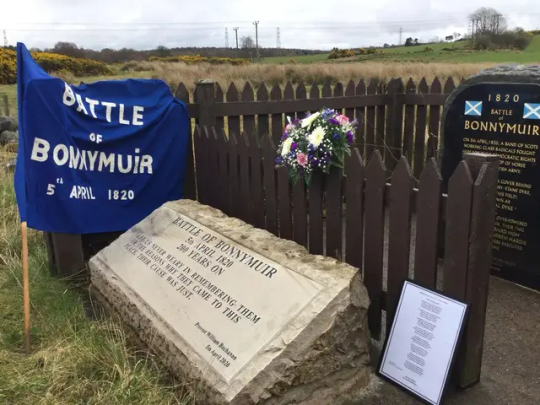

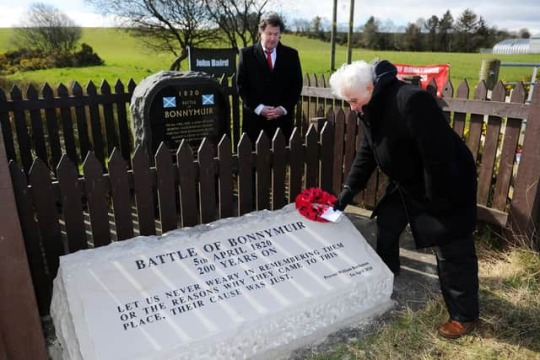
On 5th April 1820 government forces defeated Radical weavers at what became known as the Battle of Bonnymuir.
The ‘Radical Rising’ or ‘Radical War’ of 1820, also known as the Scottish Insurrection of 1820, was a week of strikes and unrest in Scotland that culminated in the trial of a number of ‘radicals’ for the crime of treason. It was the last armed uprising on Scottish soil, with the intent of establishing a radical republic.
Based in Central Scotland, artisan workers (such as weavers, shoemakers, blacksmiths), initiated a series of strikes and social unrest during the first week of April 1820. This pushed for government reform, in response to the economic depression. The Rising was quickly, and violently, quashed, and the subsequent trials took place in Scotland from July to August 1820.
The events of the Rising followed years of economic recession after the end of the Napoleonic Wars and considerable revolutionary instability on the European continent. As the economic situation worsened for many workers, societies sprung up across the country which espoused radical ideas for fundamental change.
In the early nineteenth century, Scottish politics offered power to very few people. Councillors on the Royal Burghs at this time were not elected to their position, rich landowners controlled county government and there were fewer than 3,000 parliamentary voters in the whole of Scotland, hardly a democracy.
It was recognised that the key to change was electoral reform, and the events of the American Revolution of 1776 and French Revolution of 1789 helped to promote these ideas. Radical reformers began to seek the universal franchise (for men), annual parliaments, and the repeal of the Act of Union of 1707.
Between 1st and 8th April 1820, across central Scotland, some works stopped, particularly in weaving communities, and radicals attempted to fulfil a call to rise. Several disturbances occurred across the country, perhaps the worst of which were the events at Bonnymuir, Stirlingshire, where a group of about 50 radicals clashed with a patrol of around 30 soldiers, while Bonnymuir is the most famous, or should I say infamous of the events during this period, it was by no means the only “uprising”
On Monday April 3rd a strike took force across a wide area of Scotland including Stirlingshire, Dunbartonshire, Renfrewshire, Lanarkshire and Ayrshire, with an estimated total of around 60,000 stopping work.
Reports were made of men carrying out military drill in Glasgow while foundries and forges had been raided, and iron files and dyer's poles taken to make pikes. In Kilbarchan soldiers found men making pikes, in Stewarton around 60 strikers was dispersed, in Balfron around 200 men had assembled for some sort of action. Pikes, gunpowder and weapons called "wasps" (a sort of javelin) and "clegs" (a barbed shuttlecock to throw at horses) were offered for sale.
In Glasgow John Craig led around 30 men to make for the Carron Company ironworks in Falkirk, telling them that weapons would be there for the taking, but the group were scattered when intercepted by a police patrol. Craig was caught, brought before a magistrate and fined, but the magistrate paid his fine for him.
Rumours spread that England was in arms for the cause of reform and that an army was mustering at Campsie commanded by Marshal MacDonald, a Marshal of France and son of a Jacobite refugee family, to join forces with 50,000 French soldiers at Cathkin Braes under Kinloch, the fugitive "Radical laird" from Dundee.
Government troops were ready in Glasgow, including the Rifle Brigade, the 83rd Regiment of Foot, the 7th and 10th Hussars and Samuel Hunter's Glasgow Sharpshooters. In the evening 300 radicals briefly skirmished with a party "of cavalry", but no one came to harm.
The next day, Tuesday April 4th, Duncan Turner assembled around 60 men to march to Carron, while he carried out organising work elsewhere. Half the group dropped out, however the remaining twenty five, persuaded that they would pick up support along the way, set out under the leadership of Andrew Hardie. They arrived in Condorrat, which was on the way to Carron, at 5am on April 5th. Waiting for them was John Baird who had expected a small army, not this bedraggled and soaking wet group. He was persuaded to continue the March to Carron by John King, who would himself go ahead and gather supporters. King would go to find supporters at Camelon while Baird and Hardie were to leave the road and wait at Bonnymuir.
What the leaders didn’t know is that the Government had placed spies and agitators among the crowds and they were lured to the confrontation with well-armed, trained soldiers on Bonnymuir,
The authorities at Kilsyth and Stirling Castle had however been alerted and Sixteen Hussars and sixteen Yeomanry troopers had been ordered on 4 April to leave Perth and go to protect Carron. They left the road at Bonnybridge early on April 5th and made straight for the slopes of Bonnymuir. As the newspapers subsequently reported:
"On observing this force the radicals cheered and advanced to a wall over which they commenced firing at the military. Some shots were then fired by the soldiers in return, and after some time the cavalry got through an opening in the wall and attacked the party who resisted till overpowered by the troops who succeeded in taking nineteen of them prisoners, who are lodged in Stirling Castle. Four of the radicals were wounded".
The Glasgow Herald mocked the small number of radicals encountered, but worried that "the conspiracy appears to be more extensive than almost anyone imagined... radical principles are too widely spread and too deeply rooted to vanish without some explosion and the sooner it takes place the better."
The end of the Rising
On the afternoon of April 5th, before news of the Bonnymuir fighting got out, Lees sent a message asking the radicals of Strathaven to meet up with the "Radical laird" Kinloch's large force at Cathkin. The next morning a small force of 25 men followed the instructions and left at 7 a.m. to march there. Among them was the experienced elderly Radical James Wilson who is claimed to have had a banner reading "Scotland Free or a Desart"
At East Kilbride they were warned of an army ambush, and Wilson, suspecting treachery, returned to Strathaven. The others bypassed the ambush and reached Cathkin, but as there was no sign of the promised army they dispersed. Ten of them were identified and caught, and by nightfall on April 7th; they were jailed at Hamilton.
I’ll leave things there for the moment, the aftermath will be told in further posts, one in a few days, and more as the ringleaders were made examples of as they were tried for their parts in the events.
The large memorial stone to mark the 200th anniversary of the Battle of Bonnymuir was unveiled in April 2021.
20 notes
·
View notes
Text
ABRAHAM LINCOLN
•Team of Rivals: The Political Genius of Abraham Lincoln by Doris Kearns Goodwin (BOOK | KINDLE | AUDIO)
•Lincoln by David Herbert Donald (BOOK | KINDLE | AUDIO)
•And There Was Light: Abraham Lincoln and the American Struggle by Jon Meacham (BOOK | KINDLE | AUDIO)
•The Political Life of Abraham Lincoln Trilogy by Sidney Blumenthal:
-A Self-Made Man: The Political Life of Abraham Lincoln, Vol. I, 1809-1849 (BOOK | KINDLE | AUDIO)
-Wrestling With His Angel: The Political Life of Abraham Lincoln, Vol. II, 1849-1856 (BOOK | KINDLE)
-All the Powers of the Earth: The Political Life of Abraham Lincoln, Vol. III, 1856-1860 (BOOK | KINDLE | AUDIO)
ANDREW JOHNSON
•Andrew Johnson: A Biography by Hans L. Trefousse (BOOK)
•Impeached: The Trial of President Andrew Johnson and the Fight for Lincoln's Legacy by David O. Stewart (BOOK | KINDLE | AUDIO)
•The Impeachers: The Trial of Andrew Johnson and the Dream of a Just Nation by Brenda Wineapple (BOOK | KINDLE | AUDIO)
•High Crimes & Misdemeanors: The Impeachment and Trial of Andrew Johnson by Gene Smith (BOOK)
ULYSSES S. GRANT
•Grant by Ron Chernow (BOOK | KINDLE | AUDIO)
•American Ulysses: A Life of Ulysses S. Grant by Ronald C. White (BOOK | KINDLE | AUDIO)
•The Man Who Saved the Union: Ulysses Grant in War and Peace by H.W. Brands (BOOK | KINDLE | AUDIO)
•Grant's Final Victory: Ulysses S. Grant's Heroic Last Year by Charles Bracelen Flood (BOOK | KINDLE | AUDIO)
•The Personal Memoirs of Ulysses S. Grant: The Complete Annotated Edition by Ulysses S. Grant, Edited by John F. Marszalek (BOOK | KINDLE)
RUTHERFORD B. HAYES
•Rutherford B. Hayes: Warrior and President by Ari Hoogenboom (BOOK)
•Fraud of the Century: Rutherford B. Hayes, Samuel Tilden, and the Stolen Election of 1876 by Roy Morris, Jr. (BOOK | KINDLE)
JAMES GARFIELD
•President Garfield: From Radical to Unifier by C.W. Goodyear (BOOK | KINDLE | AUDIO)
•Destiny of the Republic: A Tale of Madness, Medicine and the Murder of a President by Candice Millard (BOOK | KINDLE | AUDIO)
•The Dark Horse: The Surprise Election and Political Murder of President James A. Garfield by Kenneth D. Ackerman (BOOK | KINDLE)
•Garfield by Allan Peskin (BOOK | KINDLE)
CHESTER A. ARTHUR
•The Unexpected President: The Life and Times of Chester A. Arthur by Scott S. Greenberger (BOOK | KINDLE | AUDIO)
•Gentleman Boss: The Life of Chester Alan Arthur by Thomas C. Reeves (BOOK | KINDLE)
•Chester A. Arthur: The Accidental President by John M. Pafford (BOOK | KINDLE | AUDIO)
#Books#Book Recommendations#Book Suggestions#Presidents#Presidency#Books About Presidents#Presidential Books#Books About Presidency#Abraham Lincoln#President Lincoln#Lincoln Administration#Andrew Johnson#President Johnson#Johnson Administration#Ulysses S. Grant#President Grant#General Grant#Grant Administration#Rutherford B. Hayes#President Hayes#Hayes Administration#James A. Garfield#James Garfield#President Garfield#Garfield Administration#Chester A. Arthur#President Arthur#Arthur Administration#Assassination of James Garfield#Garfield Assassination
20 notes
·
View notes
Text
Milestone Monday


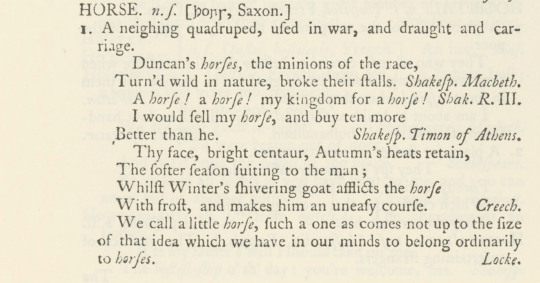


Happy National Dictionary Day!
Although the day was introduced to honor the birthday of American lexicographer Noah Webster, we are more interested in his innovative predecessor Samuel Johnson (1709-1784). Johnson was an English writer with credits as a poet, playwright, essayist, literary critic, sermonist, biographer, editor, and lexicographer. In 1746, he was approached by a group of publishers to create an authoritative English dictionary and agreed, boasting he could complete the dictionary within three years. In the end, he single-handedly completed the task within eight years utilizing only clerical assistance.
Johnson’s A Dictionary of the English Language was first published in London by noted Scottish printer and publisher William Strahan on April 15, 1755. While certainly not the first dictionary, it was groundbreaking in its documentation of the English lexicon providing not only words and their definitions, but examples of their use. Johnson accomplished this by illustrating the meanings of words through literary quotes, often citing Shakespeare, Milton, and Dryden. He also introduced lighthearted humor into some of his definitions, most notably describing a lexicographer as “a writer of dictionaries; a harmless drudge that busies himself in tracing the original and detailing the signification of words”. Of equal amusement, oats are defined as “a grain which in England is generally given to horses, but in Scotland supports the people”.


A Dictionary of the English Language was published in two volumes with volume one containing A-K and volume two L-Z. Its pages were 46 cm tall and 51 cm wide, and it is said that outside of a few special editions of the Bible no book of this size and bulk had been set to type and that no bookseller could print it without help. Johnson’s dictionary was the pre-eminent dictionary for over 100 years until the completion of the Oxford English Dictionary in 1884. Despite some criticism about his etymology and orthoepic guidelines, Johnson’s dictionary was tremendously influential in its methodology for how dictionaries should be constructed and entries presented, casting a shadow over all future dictionaries and lexicographers.
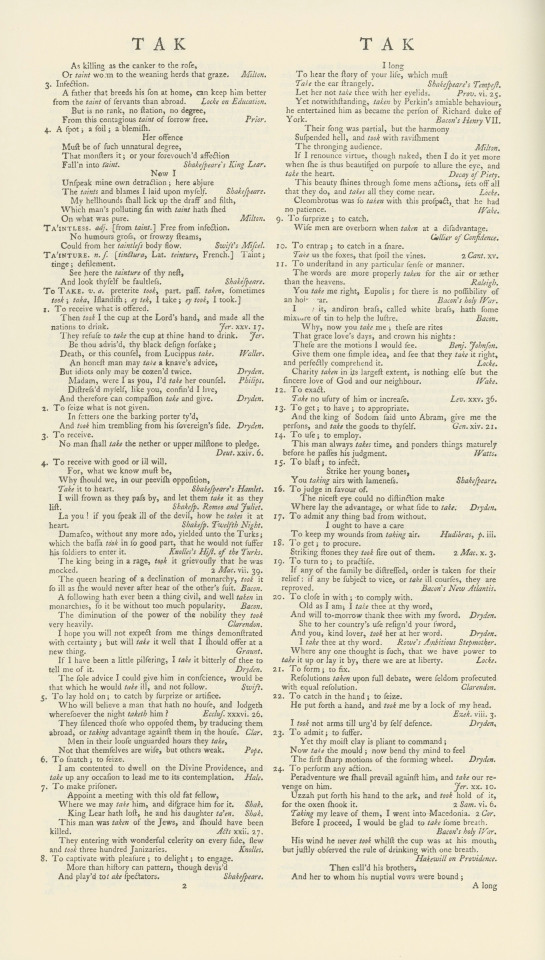
Several of the words in Johnson's dictionary were painstakingly defined. "Take" has 134 definitions running 8,000 words over 5 pages.

Woodcut tailpieces adorn the dictionary interspersed between letters.
Special Collections holds a facsimile reproduction of Johnson's dictionary, published in 1967 by AMS Press of New York.

View other Milestone Monday posts.
-Jenna, Special Collections Graduate Intern
#Milestone Monday#milestones#national dictionary day#holidays#a dictionary of the english language#samuel johnson#w. strahan#William Strahan#milestonemonday#lexicographers#woodcuts#AMS Press#tailpieces#dictionaries#English dictionaries#lexicography
30 notes
·
View notes
Note
CAN WE LWEARN ABOUT YOUR OCS (FROTHING AT THE MOUTH)
YES!!! I have full lists on foretelling with all my OC details (and half of them aren’t written up yet) but i’ll give you the gist of all of them basically! The main idea is that at one point all their stories intersect and they form a gang (which has a subsequent fallout too). this all takes place around the 1870s-1880s and up. the characters are below the cut!
Elijah Beckett - young, skittish drifter with a knack for maps and traveling. he has a scar that splits his lip open, generously gifted by his drunkard father in a fit of rage. he got his outlaw status by killing his dad in self defense and running away, relying on petty thievery and pickpocketing to make do throughout his travels. he’s a nervous young thing, who doesn’t know that he’ll end up taking after his father, turning more to melancholy than to violence
Marion Lloyd-Wheeler- the pretty lady that asks you if you want to have a good time for a price in the corner of the saloon? that’s a con-man, and he’ll get you drunk and steal all your valuables. he’s also not exactly a man, after playing this persona for so long, feeling conflicted about separating his “job” from his identity. closed off and wonderfully suave, he can talk a dog off a meat wagon.
Jacob Montgomery- the most stubborn man you’ll ever meet. A calculated, skilled bounty hunter whose own ego led to his subsequent fall into outlaw status. Priding himself on managing to kill all his bounties in a timely, efficient manner, he neglected the part where he had to bring multiple people in alive, in turn getting into a kerfuffle that escalated to the point where his partner ended up dead. ever since, he’s gone into hiding, breaking into his stored funds to cope for a year, at the bottom for a bottle. though he soon cleans up his act when a gang comes and takes him in
Wyatt Doherty - a mountain of a man who could crush your head like a watermelon. why would he, though? he hates violence. and yet he finds himself in a troubling predicament, having to illegally take up underground boxing for money to send back to his folks and younger brother in Ireland. a family man through and through, he feels conflicted having to deal with such violence when he promised his parents that he’d go to America to find good, clean farm work and send back every bit of money he makes. a sweet, slightly dim man, but full of love
Dalia Ladrón Ruiz - keep an eye on your horse whenever she’s around because she won’t hesitate to gently coax it away and take it to the nearest livestock market or horse auction and make a pretty penny off it too. a notorious horse thief driven out of Mexico because she stole the wrong person’s horse(s, plural), she finds herself with a rather sizable bounty on her head as she flees towards the wild American west. a strong, determined woman, with an abrasive sense of humor and brutal honesty
Samuel Jude Orson - it’s a miracle a man like him manages to enter his late 40s. a once-notorious outlaw, he managed to flee and leave his past life behind, finding work at a ranch who’s owner asked no questions, and was just happy to have a diligent, working man helping him with daily tasks. quiet, closed off, and blind in one eye, he doesn’t make for a particularly good (or disarming) conversationalist. he will soon realize he has a lot more to deal with when he manages to connect and bond with the ranch owner’s daughter, and finds his own past coming back to haunt him
Willow McCarthy- respective daughter of the ranch owner. a sweet, hardworking farmgirl putting in the work and the muscle to help her dad out at any given occasion, jovial and kind to the bone. she talks the ears off all the helping hands around the ranch, especially one named Samuel. she finds his stories fascinating, but opts to not tell her dad the full extent of her knowledge of Samuel. little does she know her life will shift entirely from what she is used to, getting falsely accused of a crime she knows she didn’t commit. she ends up on the run with her acquaintance-turned-mentor, Samuel, learning to toughen up, and cope with her new outlaw status.
#OK DONE. wow this took forever but YEAHHH#i mean this is the super simplified version bcs i go in much more detail in their files#and i’ll get to writing them all too so yes :)#oh and i did not include Amos and Isaac bcs while theyre western OCs they’re not part of this specific story#or rather overarching lore i guess#but here it is! hope u enjoy it anon :))#me.txt#OC. Elijah#OC. Jacob#OC. Marion#OC. Dalia#OC. Wyatt#OC. Samuel#OC. Willow#asks
6 notes
·
View notes
Text
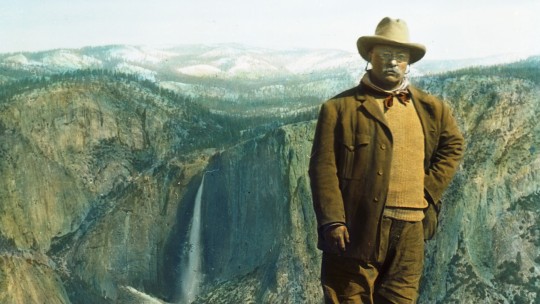
LETTERS FROM AN AMERICAN
April 7, 2024 (Sunday)
HEATHER COX RICHARDSON
APR 08, 2024
In August 1870 a U.S. exploring expedition headed out from Montana toward the Yellowstone River into land the U.S. government had recognized as belonging to different Indigenous tribes.
By October the men had reached the Yellowstone, where they reported they had “found abundance of game and trout, hot springs of five or six different kinds…basaltic columns of enormous size” and a waterfall that must, they wrote, “be in form, color and surroundings one of the most glorious objects on the American Continent.” On the strength of their widely reprinted reports, the secretary of the interior sent out an official surveying team under geologist Ferdinand V. Hayden. With it went photographer William Henry Jackson and fine artist Thomas Moran.
Banker and railroad baron Jay Cooke had arranged for Moran to join the expedition. In 1871 the popular Scribner’s Monthly published the surveyor’s report along with Moran’s drawings and a promise that Cooke’s Northern Pacific Railroad would soon lay tracks to enable tourists to see the great natural wonders of the West.
But by 1871, Americans had begun to turn against the railroads, seeing them as big businesses monopolizing American resources at the expense of ordinary Americans. When Hayden called on Congress to pass a law setting the area around Yellowstone aside as a public park, two Republicans—Senator Samuel Pomeroy of Kansas and Delegate William H. Clagett of Montana—introduced bills to protect Yellowstone in a natural state and provide against “wanton destruction of the fish and game…or destruction for the purposes of merchandise or profit.”
The House Committee on Public Lands praised Yellowstone Valley’s beauty and warned that “persons are now waiting for the spring…to enter in and take possession of these remarkable curiosities, to make merchandise of these bountiful specimens, to fence in these rare wonders so as to charge visitors a fee, as is now done at Niagara Falls, for the sight of that which ought to be as free as the air or water.” It warned that “the vandals who are now waiting to enter into this wonderland will, in a single season, despoil, beyond recovery, these remarkable curiosities which have required all the cunning skill of nature thousands of years to prepare.”
The New York Times got behind the idea that saving Yellowstone for the people was the responsibility of the federal government, saying that if businesses “should be strictly shut out, it will remain a place which we can proudly show to the benighted European as a proof of what nature—under a republican form of government—can accomplish in the great West.”
On March 1, 1872, President U. S. Grant, a Republican, signed the bill making Yellowstone a national park.
The impulse to protect natural resources from those who would plunder them for profit expanded 18 years later, when the federal government stepped in to protect Yosemite. In June 1864, Congress had passed and President Abraham Lincoln signed a law giving to the state of California the Yosemite Valley and nearby Mariposa Big Tree Grove “upon the express conditions that the premises shall be held for public use, resort and recreation.”
But by 1890 it was clear that under state management the property had been largely turned over to timber companies, sheep-herding enterprises, and tourist businesses with state contracts. Naturalist John Muir warned in the Century magazine: “Ax and plow, hogs and horses, have long been and are still busy in Yosemite’s gardens and groves. All that is accessible and destructible is rapidly being destroyed.” Congress passed a law making the land around the state property in Yosemite a national park area, and the United States military began to manage the area.
The next year, in March 1891, Congress gave the president power to “set apart and reserve…as public reservations” land that bore at least some timber, whether or not that timber was of any commercial value. Under this General Revision Act, also known as the Forest Reserve Act, Republican president Benjamin Harrison set aside timber land adjacent to Yellowstone National Park and south of Yosemite National Park. By September 1893, about 17 million acres of land had been put into forest reserves. Those who objected to this policy, according to Century, were “men [who] wish to get at it and make it earn something for them.”
Presidents of both parties continued to protect American lands, but in the late nineteenth century it was New York Republican politician Theodore Roosevelt who most dramatically expanded the effort to keep western lands from the hands of those who wanted only their timber and minerals.
Roosevelt was concerned that moneygrubbing was eroding the character of the nation, and he believed that western land nurtured the independence and community that he worried was disappearing in the East. During his presidency, which stretched from 1901 to 1909, Roosevelt protected 141 million acres of forest and established five new national parks.
More powerfully, he used the 1906 Antiquities Act, which Congress had passed to stop the looting and sale of Indigenous objects and sites, to protect land. The Antiquities Act allowed presidents to protect areas of historic, cultural, or scientific interest. Before the law was a year old, Roosevelt had created four national monuments: Devils Tower in Wyoming, El Morro in New Mexico, and Montezuma Castle and Petrified Forest in Arizona.
In 1908, Roosevelt used the Antiquities Act to protect the Grand Canyon.
Since then, presidents of both parties have protected American lands. President Jimmy Carter rivaled Roosevelt’s protection of land when he protected more than 100 million acres in Alaska from oil development. Carter’s secretary of the interior, Cecil D. Andrus, saw himself as a practical man trying to balance the needs of business and environmental needs but seemed to think business interests had become too powerful: “The domination of the department by mining, oil, timber, grazing and other interests is over.”
In fact, the fight over the public lands was not ending; it was entering a new phase. Since the 1980s, Republicans have pushed to reopen public lands to resource development, maintaining even today that Democrats have hampered oil production although it is currently, under President Joe Biden, at an all-time high.
The push to return public lands to private hands got stronger under former president Donald Trump. On April 26, 2017, Trump signed an executive order—Executive Order 13792—directing his secretary of the interior, Ryan Zinke, to review designations of 22 national monuments greater than 100,000 acres, made since 1996. He then ordered the largest national monument reduction in U.S. history, slashing the size of Utah’s Bears Ears National Monument by 85%—a goal of uranium-mining interests—and that of Utah’s Escalante–Grand Staircase by about half, favoring coal interests.
“No one better values the splendor of Utah more than you do,” Trump told cheering supporters. “And no one knows better how to use it.”
In March 2021, shortly after he took office, President Biden announced a new initiative to protect 30% of U.S. land, fresh water, and oceans areas by 2030, a plan popularly known as 30 by 30. Also in March 2021, Supreme Court chief justice John Roberts urged opponents of land protection to push back against the Antiquities Act, saying the broad protection of lands presidents have established under it is an abuse of power.
In October 2021, President Biden restored Bears Ears and Escalante–Grand Staircase to their original size. “Today’s announcement is not just about national monuments,” Interior Secretary Deb Haaland, a member of the Laguna Pueblo in New Mexico, said at the ceremony. “It’s about this administration centering the voices of Indigenous people and affirming the shared stewardship of this landscape with tribal nations.”
In 2022, nearly 312 million people visited the country’s national parks and monuments, supporting 378,400 jobs and spending $23.9 billion in communities within 60 miles of a park. This amounted to a $50.3 billion benefit to the nation’s economy.
But the struggle over the use of public lands continues, and now the Republicans are standing on the opposite side from their position of a century ago. Project 2025, the blueprint for a second Trump presidency, demands significant increases in drilling for oil and gas. That will require removing land from federal protection and opening it to private development. As Roberts urged, Project 2025 promises to seek a Supreme Court ruling to permit the president to reduce the size of national monuments. But it takes that advice even further.
It says a second Trump administration “must seek repeal of the Antiquities Act of 1906.”
LETTERS FROM AN AMERICAN
HEATHER COX RICHARDSON
#Letters From An American#Heather Cox Richardson#public lands#the Antiquities Act of 1906#history#Department of the interior#tribal nations#Teddy Roosevelt#conservation#conservatism#preservation
10 notes
·
View notes
Text

A Prophecy Against Tyre
1 And it came to pass in the eleventh year, in the first day of the month, that the word of the LORD came to me, saying, 2 Son of man, because that Tyrus has said against Jerusalem, Aha, she is broken that was the gates of the people: she is turned to me: I shall be replenished, now she is laid waste: 3 Therefore thus said the Lord GOD; Behold, I am against you, O Tyrus, and will cause many nations to come up against you, as the sea causes his waves to come up. 4 And they shall destroy the walls of Tyrus, and break down her towers: I will also scrape her dust from her, and make her like the top of a rock. 5 It shall be a place for the spreading of nets in the middle of the sea: for I have spoken it, said the Lord GOD: and it shall become a spoil to the nations. 6 And her daughters which are in the field shall be slain by the sword; and they shall know that I am the LORD.
7 For thus said the Lord GOD; Behold, I will bring on Tyrus Nebuchadrezzar king of Babylon, a king of kings, from the north, with horses, and with chariots, and with horsemen, and companies, and much people. 8 He shall slay with the sword your daughters in the field: and he shall make a fort against you, and cast a mount against you, and lift up the buckler against you. 9 And he shall set engines of war against your walls, and with his axes he shall break down your towers. 10 By reason of the abundance of his horses their dust shall cover you: your walls shall shake at the noise of the horsemen, and of the wheels, and of the chariots, when he shall enter into your gates, as men enter into a city wherein is made a breach. 11 With the hoofs of his horses shall he tread down all your streets: he shall slay your people by the sword, and your strong garrisons shall go down to the ground. 12 And they shall make a spoil of your riches, and make a prey of your merchandise: and they shall break down your walls, and destroy your pleasant houses: and they shall lay your stones and your timber and your dust in the middle of the water. 13 And I will cause the noise of your songs to cease; and the sound of your harps shall be no more heard. 14 And I will make you like the top of a rock: you shall be a place to spread nets on; you shall be built no more: for I the LORD have spoken it, said the Lord GOD.
15 Thus said the Lord GOD to Tyrus; Shall not the isles shake at the sound of your fall, when the wounded cry, when the slaughter is made in the middle of you? 16 Then all the princes of the sea shall come down from their thrones, and lay away their robes, and put off their broidered garments: they shall clothe themselves with trembling; they shall sit on the ground, and shall tremble at every moment, and be astonished at you.
17 And they shall take up a lamentation for you, and say to you, How are you destroyed, that were inhabited of seafaring men, the renowned city, which were strong in the sea, she and her inhabitants, which cause their terror to be on all that haunt it!
18 Now shall the isles tremble in the day of your fall; yes, the isles that are in the sea shall be troubled at your departure.
19 For thus said the Lord GOD; When I shall make you a desolate city, like the cities that are not inhabited; when I shall bring up the deep on you, and great waters shall cover you; 20 When I shall bring you down with them that descend into the pit, with the people of old time, and shall set you in the low parts of the earth, in places desolate of old, with them that go down to the pit, that you be not inhabited; and I shall set glory in the land of the living; 21 I will make you a terror, and you shall be no more: though you be sought for, yet shall you never be found again, said the Lord GOD.
— Ezekiel 26 | American King James Version (KJVUS)
The American King James Version is Produced by Stone Engelbrite. It is a simple word for modern word update from the King James English.
Cross References: Leviticus 14:41; Deuteronomy 13:16; 2 Samuel 5:11; 2 Chronicles 32:27; Ezra 7:12; Isaiah 5:28; Isaiah 5:30; Isaiah 8:7; Isaiah 14:12; Isaiah 23:5; Isaiah 41:5; Jeremiah 4:13; Jeremiah 20:4; Ezekiel 16:46; Ezekiel 21:22; Ezekiel 25:7; Ezekiel 25:17; Matthew 11:23; Luke 19:43; 1 Peter 5:5; Revelation 18:21-22
#Lord#prophecy#Tyre#Ezekiel 26#Book of Ezekiel#Old Testament#KJVUS#American King James Version Bible#Stone Engelbrite
8 notes
·
View notes
Text
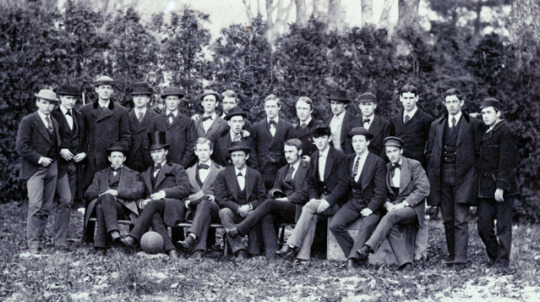
Although the first intercollegiate American football game was infamously played on Princeton's campus in 1869, for the first few years, it would have been unrecognizable as American football to most who know the game today. Samuel Cowart, Class of 1876, described an incident that occurred in a game with Yale on December 15, 1873, when the ball got caught between teams and popped when both sides kicked it at the same time:
“It was a spherical/heavy rubber ball, blown up with a key. They had to take a team of horses and go back to New Haven, in order to get another football.”
Photo: The 1873 Princeton football team with its round ball in front of the man in the top hat. Historical Photograph Collection, Campus Life Series (AC112), Box LP36, Image No. 2522.
#sports history#On This Day#1870s#football#American football#Princeton#Yale#quote#Princetonquote#OnThisDay#athletics#sports#Princetonsports
17 notes
·
View notes
Text
What's in a Name? — Miraculous Ladybug
1. DUPAIN-CHENG, AGRESTE & GRAHAM DE VANILY
1.1. Dupain-Cheng
Dupain: "of bread", in French.
Cheng: most likely from 程 (chéng) meaning "schedule", "journey", or "procedure". It is the surname of Chinese-born French academician and writer François Cheng.
Marinette: a diminutive of "Marie" and sometimes used as a form of "Marine", it is ultimately derived from an Egyptian name meaning "love, beloved", which was later associated with the Hebrew words for "bitter" and "rebellion". It is etymologically connected to the name of the Ladybug Miraculous: in languages like English and German, the ladybug is named after the Virgin Mary.
"Marinette" is also a noun in French, namely the feminine form of "marin", meaning "sailor", and was thus most likely also chosen in reference to Sailor Moon. In Middle French, it also meant "compass"—a tidbit to keep in mind when watching Captain Hardrock.
The name is very old-fashioned. It was most frequently used from 1927 to 1957, owing to the popularity of the book series "Contes du chat perché", whose main characters were named Delphine and Marinette.
Tom: short form of "Thomas", which comes from an Aramaic word meaning "twin". References series creator Thomas Astruc.
Sabine: from the name of an Italic tribe that inhabited what is now Lazio. Is a reference to the woman who initially inspired Thomas Astruc to create Miraculous Ladybug.
Gina: short form of several Italian names that end with "-gina", such as Regina or Georgina. Was popularized by Italian actress Gina Lollobrigida, whose birth name was Luigina.
Rolland: English variant of "Roland", which is in turn derived from two Germanic elements meaning "fame" and either "land" or "brave". Roland was the name of a semi-legendary Frankish military leader, whose story is told in the epic poem "La Chanson de Roland". Aside from the historical associations, it was probably chosen as a pun on "rolling pin".
Wang: "king", in Mandarin.
1.2. Agreste
Agreste: meaning "rustic" in French, it's also used in the figurative sense of "rude, uncivilized". Is also the French word for the greyling butterfly (Hipparchia semele).
Adrien: ultimately derived from the name of an Etruscan city, which in turn might have been derived from a word meaning "water". Was probably chosen in reference to the Adriatic Sea, since Marinette, Luka, and Félix's names also have a nautical theme.
Athanase: from "Athanasios", a Greek name meaning "immortal".
Gabriel: "God is my strongman", in Hebrew. This is the name of an archangel associated with carrying messages from God. Was most likely chosen in reference to fashion designer Coco Chanel, whose real name was Gabrielle.
Émilie: of Latin origin, it is probably derived from the word "aemulus", which means "rival" or "envious, jealous", and is etymologically related to the word "emulate". Is also most likely a reference to Emily Lyman, mother of Harry Osborn.
1.3. Graham de Vanily
Graham: from two Old English words meaning "gravel" and "homestead".
de Vanily: from the word "vanilla". Together with Emilie and Amelie's first names and their other surname, it forms a pun: in French, "Emilie/Amelie Graham de Vanily" sounds kind of like "un milligramme de vanille", meaning "a milligram of vanilla".
Fathom: from a unit of length equal to about 1.8 meters (6 feet, for the Americans), chiefly used in nautical measurements. As a verb, it means "to measure the depth of something", and is also used figuratively to mean "to comprehend, understand".
Félix: from a Latin word meaning "happy, lucky". Used to be Adrien's name in previous drafts of the story, and was thus most probably a reference to both Felix the Cat and Felicia Hardy.
Amélie: from a Germanic word meaning "work, activity".
Colt: from an English word meaning "young male horse", it was most famously the surname of American industrialist Samuel Colt, owner of the Colt firearms company.
#next up: césaire; lahiffe; bourgeois#series: what's in a name?#what's in a name: miraculous ladybug#miraculous ladybug#marinette dupain cheng#adrien agreste#gabriel agreste#emilie agreste#felix fathom
16 notes
·
View notes
Text

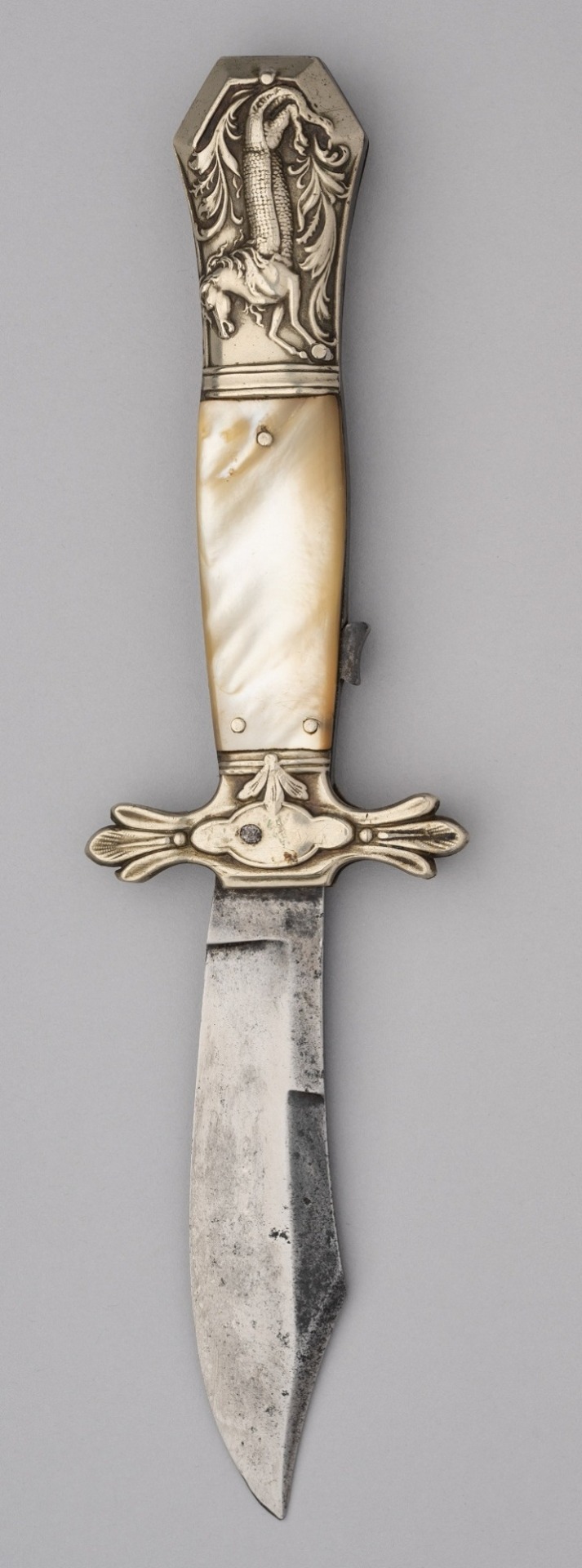




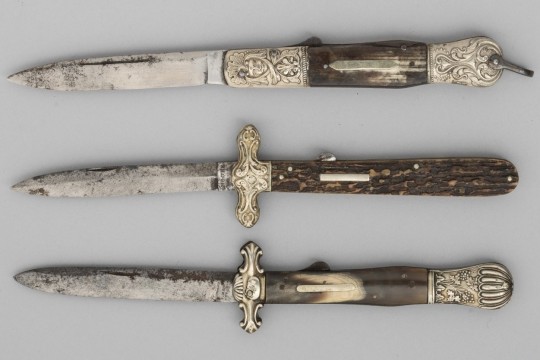

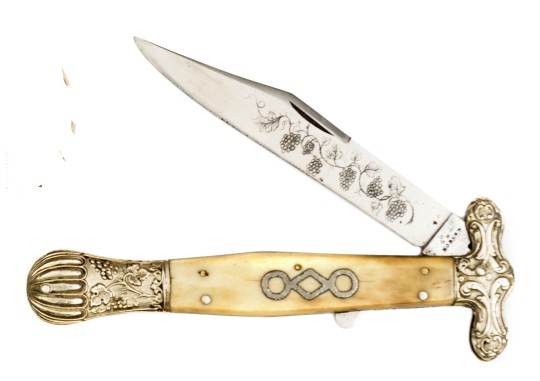
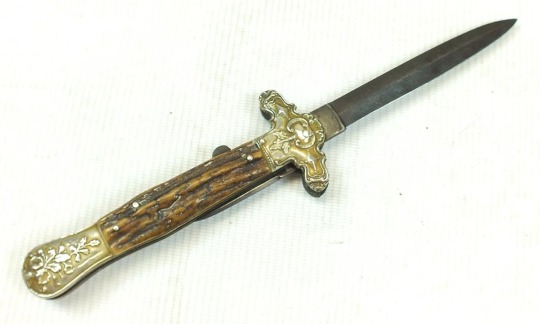
Folding bowie knives and dirks, 19th century
The terms “folding dirk” and “folding bowie knife” are used, often interchangeably, to refer to large, well-made, usually ornate jack knives of the mid-19th century that were designed primarily as weapons. Strictly speaking, “folding dirk” refers only to such knives that have double-edged “dirk” or dagger blades. “Folding bowie,” the more general term, encompasses larger folding dirks, as well as big folding combat knives with clip-point or spear-point blades.
Folding dirks and bowies were the pocket-carry counterparts of the better-known fixed-blade bowie knives. Bowie knives leapt to national attention in 1827 with the notorious Sandbar Fight involving James Bowie and remained in vogue for about half a century. The folding bowie may have been just as popular as the less costly fixed blade in the 1830s, the enthusiastic early years of the bowie trend. By the 1850s, the big folders were in eclipse. After the Civil War, only small folding dirks were still available.
Almost all folding dirks and bowie knives were made in Sheffield and are over 4 1/2 inches long closed. They are generally slender, and most have a cross-guard integral with the front bolsters. Ornamental appearance was an important consideration in the design of folding dirks and bowies. Consequently, they were made in a wide variety of shapes. Another factor in their diversity of shape is that most were made from circa 1830 to 1860, before mass production and pattern standardization had taken hold in the cutlery industry. Not only are the shapes of the big knives varied but so, too, are their decorations. Their bolsters are almost always ornately embossed.
Though the knives were handmade, their fancy nickel-silver bolsters were mass-produced. Standard designs were stamped out by specialist companies and sold to the makers. Some of the original dies used to stamp these fancy mounts still exist, which helps account for a certain amount of counterfeiting—most of which is inept—and questionable repair work.
Handle materials on folding dirks and bowies are generally of high quality. Stag, ivory and mother-of-pearl are the most often encountered. Horn and tortoise shell are more unusual. We have not observed bone or wood handles on them, but some may exist.
The principal makers of folding dirks and bowies seem to have been Samuel C. Wragg, William and Samuel Butcher, George Wostenholm & Sons, and Robert and Joseph Lingard. Many other Sheffield names are found on the knives as well.
— Roger Baker and Bernard Levine, Blade's Guide to Knives & Their Values (Krause Publications, 2009) (abridged)
Descriptions:
A FOLDING BOWIE KNIFE FOR THE AMERICAN MARKET, JOSEPH HOLMES, CIRCA 1870, with robust folding locking blade formed with a clipped-back point, signed ‘Jph Holmes Warranted Cutlery’ at the ricasso, German silver cross-piece (one quillon face missing), German silver pommel cast with foliage and a horse on each face, milled copper alloy fillets, mother-of-pearl scales and vacant German silver escutcheon, 15.3 cm (closed)
A LINGARD PATENT SPRING-KNIFE, CIRCA 1860, with tapering blade retaining some stamped inscription including ‘February 9th 1850’, ricasso stamped ‘Lingard, Peacroft Sheffield, secondary blade stamped en suite, German silver fillets, mother-of-pearl scales each retained by five rivets, and embossed German silver cross-guard and pommel each decorated with scrolls and foliage, in its leather scabbard with belt loop, 13.5 cm (closed)
A FOLDING LOCK KNIFE FOR THE AMERICAN MARKET, SIMPSON, CIRCA 1860-70, with double-edged folding sprung locking blade struck ‘Simpson’ at the forte, German silver cross-piece cast with scrolls in low relief, German silver horsehead pommel seated on a cannon, milled copper allot fillets, and natural staghorn scales with German silver release stud locked by a small sliding bolt, 15.5 cm closed
A FOLDING DIRK FOR THE AMERICAN MARKET, SHEFFIELD, LATE 19TH CENTURY, with folding locking blade stamped ‘S*H Sheffield’ at the ricasso, German silver pivoting cross-piece, hardwood scales inlaid with mother-of-pearl, and German silver pommel with Federal eagle and shield, 11.0 cm, blade
A HORSEHEAD LOCKBACK SHEFFIELD FOLDING DIRK, 9" Overall open, 4" blade “HANCOCK / & / SONS / SHEFFIELD”, blade has stamped cipher ”BEST QUALITY” horn slab grips, vacant German silver escutcheon. CONDITION: good to very good overall, blade is gray w/ sharpening, 1.5" German silver floral cross guard, horse head pommel worn through at snout w/ solder exposed. (02-15586/JS).
A LOCK KNIFE, MOORE, PROBABLY SHEFFIELD, LATE 19TH CENTURY AND TWO FURTHER LOCK KNIVES, the first with folding locking blade, signed rectangular ricasso, two-piece German silver guard, natural staghorn scales over brass fillets, and vacant German silver escutcheon; the second and third of similar form, with German silver guards and pommels each cast with scrolling foliage in low relief, and polished horn scales, the first: 13.2 cm (closed) (3)
James Rodgers & Sons Folding Dirk with Pearl Grip Panels and Relief German Silver Mountings 4 3/8-inch spearpoint locking blade, with "V[crown]R/James/Rodgers/Sheffield" on ricasso. Overall length when opened, 9 3/8-inches. Relief acanthus leaf and shell German silver mountings, the mother-of-pearl grip panels with oval escutcheon inlay on one side. Late 19th century. Very good to fine. Scattered pitting on steel and sharpening marks, gray patina to tang. Pearl with minor chipping. 4/20/07 RLW #297E
A 19th century folding Bowie type knife, 9¾” open, the 4½” clipped back blade etched on one side with panel of scrolling foliage, and on the other side with a bunch of grapes and vines (evidently added later), the base of the blade stamped “John B. Hobson” (has been pitted and cleaned); with German silver crosspiece and pommel, the crosspiece embossed with foliate scrolls, pommel with flutes, vines and bunches of grapes; bone sideplates, one side inset with openwork white metal panel, the other side scratched “1859 Tesmaker” (or Tes Maker?). Good Condition (small crack in one sideplate). Plate 5
A MID-VICTORIAN FOLDING DIRK OR BOWIE KNIFE BY W RODGERS, CIRCA 1850, 11cm flattened diamond section blade stamped W RODGERS CELEBRATED CUTLERY, foliate embossed white metal crossguard, riveted two-piece natural stag horn grips, the white metal pommel decorated with flowers and foliage. This is an earlier and rarer W Rodgers and not to be confused with the later William Rodgers
34 notes
·
View notes
Text
Turnsgiving 2022 Day 6: Hot Takes
Simcoe should not have been the villain, and the show would have worked perfectly well without one.
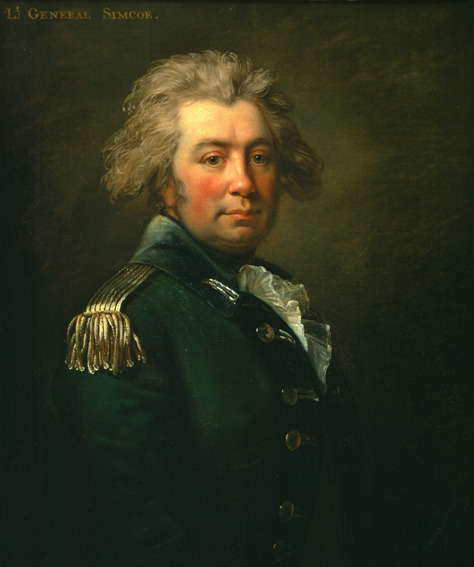
Ironically, and I fully concede that, it was the character of Simcoe who prompted me to watch beyond the pilot episode. Thriving on trouble, the pale-eyed, red-haired menace to society who presumably mistook the Geneva Convention for a personal bucket list had grown on me as the, as I felt then, only compelling character.
The plot improved after having navigated the rocky waters of the pilot, but my favourite character remained the prissy villain who appeared to have no other raison d'être than to be his terrible worst with every breath he took. By the end of the show, his actions were, of course, explained with a half-baked, historically implausible tragic backstory, and that was that.
Prompted to research Simcoe (could he have been really that bad?), I was surprised not to find a scheming, dastardly man thriving on bloodshed, but a surprisingly sensitive, caring individual who had the wish to use his place in the world not only to step up the ladder of professional and social success, but to also leave a positive legacy; and rather than poisoning his superior officer's horse, the animal-loving Simcoe actually rescued a former war horse and paid the staggering sum of £40 for the horse and his carer to be shipped to England, where Salem, the horse, became a playfellow for the Simcoe-children and was allowed to live out his old age in the pasture.
The real Simcoe was neither violent, nor blue-eyed and red haired, and most of his back story did not add up historically, either. Though tall, but somewhat stout, hazel-eyed, and dark-haired, he looked not one bit the regrettably attractive villain, and certainly did not act like one. While Turn-Simcoe's thriving force was hate and the wish to avenge the death of his father in the Black Hole of Calcutta-incident (which is its own can of worms that I might open sometime if people are interested), his father, not a surgeon but a naval captain, died of pneumonia aboard his ship and his widowed mother arranged a move to Exeter, so as to be nearer her son's godfather Samuel Graves, who did not only prove a loving, involved ersatz parent, but also continued to support his godson emotionally and financially for as long as he lived.
Learning all those things, I asked myself why Simcoe's name was chosen for the, let's face it, fictional villain, and came to the conclusion that perhaps, the show would not have needed a classic embodiment of evil that both sides of the central conflict can loathe equally at all.
One of Turn's weak points is that at heart, while having been marketed as a novel approach to depicting the American Revolutionary War by including the perspectives of people of colour, loyalists and others who had prior to the series only very rarely been depicted in media set during the war, it still is very American at heart.
By the last season, sympathetic figures whose allegiance is not with the US are rare, or barely to be seen at all; the last episode is all Yorktown and Yankee Doodle, while e. g. the story of the enslaved informant Abigail, a central character from season one on, and her escape to Canada are merely alluded to in the closing monologue.
The series, naturally vying for a viewership (with a new season of GoT at the time, no less), at last fawned patriotically-minded American audiences a little too greatly to truly bring something new and revolutionary to the table.
What would have been compelling to see is an approach to the period that does not pick a side narratively; loyalists and pro-American characters (and the members of the respective militaries representing their interests) could have been depicted as equally (un-)sympathetic and receive equal screen time. The plot could have followed them trying to achieve what they think is the right decision for the country they live in, and thus, how they, not by personal enmity but by historical circumstance and inevitability, become each other's enemies without necessarily having any other (personal) differences.
Throw in the Hewlett/Strong romance and tell the marketing team not to falsely advertise the series as a faithful retelling of history but a historically inspired drama and that's a somewhat new, historically as well as narratively intriguing approach to the time period.
58 notes
·
View notes
Text

︻デ═一 • • • • • • • • • • • • • • • • • • • • • •
"And I heard a voice in the midst of the four beasts and I looked and behold, a pale horse and his name that sat on him was Death and Hell followed with him"
• • • • • • • • • • • • • • • • • • • • • ╾━╤デ╦︻
This blog has no set DNI but me and the block button are lovers
╭ ★ ABOUT ME ★ ╮
Call me Sam or Samuel (I’m also ok with Sammy & other nicknames if we’re close)
I’m 16 but I have no problems with adults interacting just don’t be creepy
I’m a (trans) dude so stick with He/Him, I block transphobic assholes on here don’t bother arguing
I have BPD (questioning comorbid NPD or at-least narcissistic tendencies) and I’m autistic (high functioning) which causes me to have low empathy
Aroace (despite this I’m still a hopeless romantic) but attraction fluctuates. Default to repulsed, do not flirt with me
My research shit isn’t on here (I keep all that offline), same with any art I make this blog is literally just for rambling and interacting with others
[DMs and asks are always open, however I actively avoid interacting with antis]
╰ ╯

╭ ★More Shit★ ╮
I’m a weapons collector and gun/explosives enthusiast.
My main focus is on Columbine but I find Sandy Hook interesting as well. I’m really just here for the big shootings sorry guys.
I love just about anything horror related and I’m a big 80’s/90’s movie fan. The Thing (1982, can’t stand the new one.) and Aliens (1986, yeah yeah I prefer the second movie don’t bite my head off.) are two of my favorites. Oh and pretty much any older FPS style games, if anyone here remembers Turok (especially the second game Seeds of Evil on N64) hmu.
I was raised extremely alt right, more specifically as a Neo Nazi. While I still actively work to correct my mindset please do correct me if I’m ever unknowingly insensitive.
╰ ╯
Random facts (?) about myself that I can’t turn into a paragraph below!
I have a 4.0 GPA and I’m a national honors society member.
I have a buck hunting knife named Kindness my father gave to me, I also name all my guns.
I had (formerly) planned to join the Marines after Highschool however now I’m looking into a field in bio chem.
I'm a pathetic stray dog of a man.
Midwesterner but raised very southern.
Learning ASL as I’m hard of hearing
I’m also learning German :]
I don’t shut up


4 notes
·
View notes
Note
Fantasy Recs:
The Book of Jhereg by Steven Brust (Dragaera)
Black God's Kiss by C.L. Moore (Jirel of Joiry)
Waylander by David Gemmell (Waylander)
The Blacktongue Thief and Between Two Fires by Christopher Buehlman (Blacktongue)
Assassin’s Apprentice by Robin Hobb (Realm of the Elderlings)
The Blade Itself by Joe Abercrombie (The First Law)
A Game of Thrones by George R.R. Martin (A Song of Ice and Fire)
The Curse of Chalion by Lois McMaster Bujold (World of the Five Gods)
The Dragonbone Chair by Tad Williams (Memory, Sorrow, and Thorn)
Chronicles of the Black Company by Glen Cook (The Black Company)
The Dragon’s Path by Daniel Abraham (The Dagger and the Coin)
The Traitor Baru Cormorant by Seth Dickinson (The Masquerade)
Johannes Cabal the Necromancer by Jonathan L. Howard (Johannes Cabal)
The Folding Knife by K.J. Parker
The Devourers by Indra Das
Jonathan Strange & Mr. Norrell and Piranesi by Susanna Clarke
A Country of Ghosts by Margaret Killjoy
The Colour of Magic by Terry Pratchett (Discworld)
City of Bones by Martha Wells
The Alchemy of Stone by Ekaterina Sedia
A Woman of the Sword by Anna Smith Spark
Those Above by Daniel Polansky (The Empty Throne)
The Spear Cuts Through Water by Simon Jimenez
The Dragon Waiting by John M. Ford
Books of Blood by Clive Barker
Tigana by Guy Gavriel Kay
The Chatelaine by Kate Heartfield
The Etched City by K.J. Bishop
The Saint of Bright Doors by Vajra Chandrasekera
Gormenghast by Meryn Peake
Viriconium by M. John Harrison
Black Leopard, Red Wolf by Marlon James (The Dark Star)
Horror Recs:
North American Lake Monsters by Nathan Ballingrud
The Marigold by Andrew F. Sullivan
The Beautiful Thing That Awaits Us All by Laird Barron
The Wingspan of Severed Hands by Joe Koch
A Collapse of Horses by Brian Evenson
The Immeasurable Corpse of Nature by Christopher Slatsky
Negative Space by B.R. Yeager
A Natural History of Hell by Jeffrey Ford
We Have Always Lived In The Castle by Shirley Jackson
Furnace by Livia Llewelyn
Manhunt by Gretchen Felker-Martin
The Salt Grows Heavy by Cassandra Khaw
Tell Me I'm Worthless by Alison Rumfitt
Queen of Teeth by Hailey Piper
Leech by Hiron Ennes
Sci-Fi Recs:
An Unkindness of Ghosts by Rivers Solomon
The Left Hand of Darkness by Ursula K. Le Guin
Rosewater by Tade Thompson (Rosewater)
Ammonite by Nicola Griffith
Dawn by Octavia E. Butler (Xenogenesis)
A Scanner Darkly by Philip K. Dick
Annihilation by Jeff VanderMeer
Dhalgren by Samuel R. Delany
Bang Bang Bodhisattva by Aubrey Wood
AHHHHH!!! THANK YOU SO MUCH!!! All go on The List!! Can't wait to check all of them out!
2 notes
·
View notes